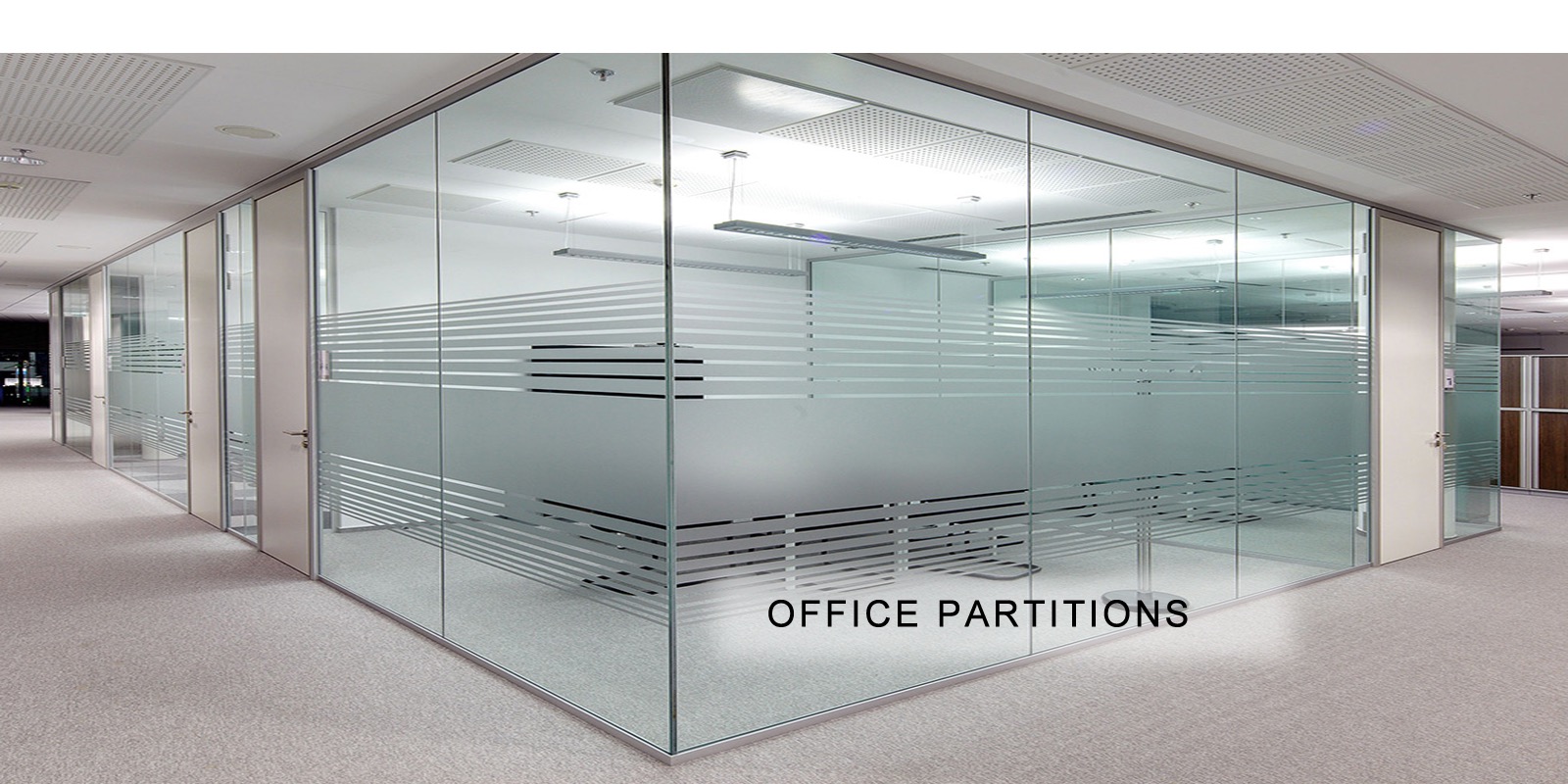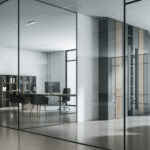
It’s Not Just About Style – Here’s What’s Driving the Transition
Across Nairobi and other fast-growing Kenyan cities, the urban skyline is changing — shimmering with reflective surfaces and clean, transparent lines. What was once dominated by concrete and brick is now giving way to glass façades in Nairobi, Kenya, where corporate towers and commercial blocks proudly showcase full-glazed exteriors.
This is more than a design fad. The rise of glass façades represents a shift in how developers think about performance, prestige, and sustainability. From energy efficiency to natural lighting, from brand identity to long-term maintenance savings, glass has quietly become the new language of modern architecture in Kenya.
Today, many office towers feature up to 80% glass coverage, redefining not just aesthetics but how interior spaces feel and function. So what’s driving this transition — and why now? Let’s dive into the real forces behind Nairobi’s glass revolution.
The Traditional Walling Model vs Glass Façades In Nairobi Kenya
First, let’s set the scene by comparing ordinary walling (masonry, concrete, block, plaster) with modern glass façade systems.
| Feature | Ordinary Walling | Glass Façade / Curtain Wall |
|---|---|---|
| Material mass & thickness | High (blocks, concrete) | Low structural mass; glass + frame |
| Natural light penetration | Limited window openings | Large expanses of transparent or translucent glass |
| Visual ‘look’ | Solid, opaque, heavy | Transparent, reflective, sleek modern aesthetic |
| Internal flexibility | Good for heavy load functions; less flexibility for re-tenanting | High flexibility: open floor-plates, full height glazing, easy rezoning |
| Construction speed & structural load | Slower erection, heavy loads, large structural mass | Often lighter envelope, prefabricated curtain wall systems accelerate build |
| Energy & daylight potential | Mixed: good thermal mass but sometimes dark interiors | High daylight potential; if engineered correctly, good performance |
| Branding & value proposition | More conventional look | Premium look appeals to multinational tenants, higher rents |
| Maintenance & longevity | Requires repainting, repairs of plaster | High-performance glazing may need less frequent major upkeep (though maintenance access is important) |
This comparison shows that the shift to glass is not simply about “looking good”. The decision involves architecture, engineering, economics and occupant wellbeing.
Why the Sudden Transition? Key Drivers in Kenya

Here are the main reasons why glass is rapidly replacing traditional walling in Nairobi and Kenya-wide commercial buildings.
1. Branding, prestige and market positioning
In cities like Nairobi, visible signals of corporate prestige matter. Buildings clad in glass communicate modernity, transparency (ironically), global reach, and high-end positioning. For developers chasing anchor tenants or international firms, a glass envelope is a design asset.
2. Daylight and wellbeing
Glass allows natural light to penetrate deep into the building floor-plate. That means:
- Reduction in artificial lighting demand during daytime
- Better visual comfort, improved mood and productivity among occupants
- Ability to create open-plan arrangements that still feel bright and connected
According to architectural sources: “abundant natural light is one of the most obvious advantages of glass façades”.
3. Advances in glazing technology making glass functional
Without modern glazing technologies, glass façades would have high heat gains, glare, and energy waste. But today we have:
- Low-E coatings and spectrally selective glass
- Double or triple glazing with argon fills
- Thermally broken frames and high-performance curtain wall systems
- Smart glass (switchable or electrochromic) and integrated shading systems
These technologies mean that glass no longer automatically implies high energy cost. Indeed, studies show properly engineered façades can significantly reduce heating/cooling loads.
4. Construction speed, structural efficiency and open floor-plates
Glass curtain wall systems are often pre-fabricated, lightweight compared to heavy masonry, and allow faster erection. In a high-rise context in Nairobi — where timelines and financing costs are important — a lighter envelope that accelerates construction is appealing.
Additionally, large glazed façades complement open-plan offices (which are highly demanded by tech firms, service corporates, coworking operators etc.) by allowing full-height openings, flexible partitions and better re-tenanting potential.
5. Energy efficiency and sustainability demands
Kenya is part of the global push toward green building. In Nairobi, projects such as the The Cube are achieving EDGE Advanced certification using high-performance glass façade systems.
Local data: According to a blog from ToughGlass Kenya, energy-efficient glass reduces solar gain by up to 70% and total energy consumption in buildings by 20-30% in East African context.
Global studies: In hot climates, glazing type and façade material selection significantly impact energy consumption — one cited study found up to 78.4% difference in energy consumption by varying façade materials and glazing.
6. Urban view, premium locations and value capture
In high-rise districts of Nairobi (Upper Hill, Westlands, Kilimani) views are a major premium. Glass façades allow views outward (cityscape, park, lake, gardens) which increase rental and sale value. With land and construction costs rising, differentiating via façade becomes important.
7. Flexibility, future-proofing and tenant change-over
Glass allows interior flexibility — offices can be reconfigured, partitions removed, floorplates changed without major structural intervention. In fast-moving markets (Nairobi especially), assets that adapt easily are preferred.
Data Snapshot: Glass Façade Performance Metrics
Here are some key numbers and data points that support the argument:
| Metric | Typical Conventional Wall | High-Performance Glass Façade (double glazed, Low-E) |
|---|---|---|
| Solar Heat Gain Control (SHGC reduction) | – | Up to 70% reduction reported in Kenyan context. |
| Energy consumption reduction in building envelope | – | 20-30% reduction reported in East Africa. |
| Daylighting impact (artificial lighting reduction) | – | Many sources show 30-60% reduction in lighting energy when large glazing and daylighting strategy used. |
| Variation in energy use by façade materials (hot climate study) | Base case | Up to 78.4% lower energy consumption when glazing and façade materials optimised. |
Chart (conceptual):
- X-axis = façade type (traditional wall → single glazing → double glazing Low-E → smart glass)
- Y-axis = % reduction in energy consumption
According to studies, the curve steeply declines as you move to high-performance glazing.
This data shows the performance story behind the glass façade narrative — it’s not just aesthetic, it’s measurable.
The Case of Nairobi: Local Conditions Make Glass Façades in Nairobi Kenya Attractive
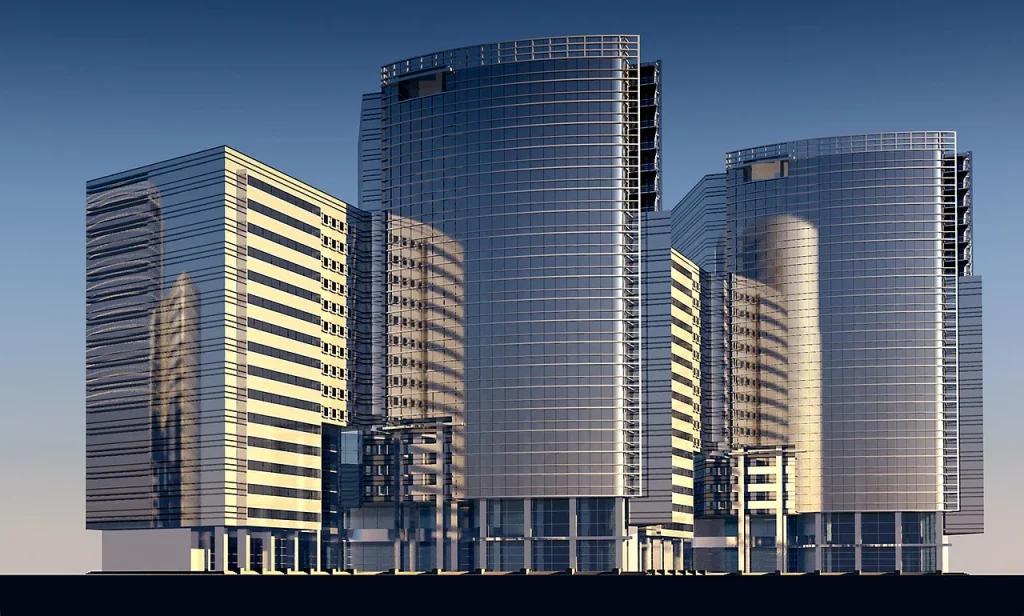
In the Kenyan context, and more specifically Nairobi, several local factors make the switch to glass particularly logical.
- Climate: Nairobi’s altitude (~1,800 m) means moderately temperate conditions, yet with significant sun and heat gain potential. A well-designed glazed façade can let in daylight while using coatings and shading to control heat.
- Rapid commercial growth: Districts like Upper Hill and Westlands are seeing new office towers; to capture multinational tenants demand modern, globally-styled buildings.
- Land & development cost pressure: Given high costs, developers seek design elements that capture premium rent and reduce vacancy. Glass façades help differentiate the asset.
- Technological availability: Many local firms now supply high-performance glazing, aluminium framing systems and installation expertise — the supply side is maturing.
- Regulatory and sustainability pressure: Green building certifications and tenant demands (e.g., international corporates expecting global standards) push for high-performance façades.
As noted in a Cambridge Core article, reflective/glassy office towers in Nairobi such as the Integrity Centre use large glazed surfaces that communicate both transparency and power.
Key Considerations & Pitfalls — Because Glass Isn’t Always Better Unless Done Right
It’s important to stress that glass façades only deliver when well designed, specified and maintained. Here are some caution points:
- Heat / glare build-up: Without solar control coatings or shading, glass façades may lead to high internal temperatures, more air-conditioning and higher energy costs. A study in India found glass-façade buildings consumed nearly 10× more power.
- Acoustic and privacy concerns: Large glazing can transmit sound and reduce privacy unless laminated or acoustic glass used.
- Maintenance & cleaning access: High-rise glass façades require robust cleaning systems and safe access provisions — otherwise long-term aesthetics suffer.
- Initial cost premium: High-performance glazing systems cost more upfront than ordinary walling. Clients must understand lifecycle cost, not just upfront cost.
- Bird strike risk / solar reflections: Large reflective glass areas may cause bird collisions or glare issues for pedestrians and nearby traffic.
- Embodied carbon / sustainability trade-offs: Glass and aluminium can have high embodied energy; the net sustainability benefit depends on lifecycle analysis.
Given these, the decision to use glass must be integrated with mechanical systems, shading, orientation, structural design and maintenance planning.
Why Many Buildings Are Now 70-80% or More Glazed in Nairobi
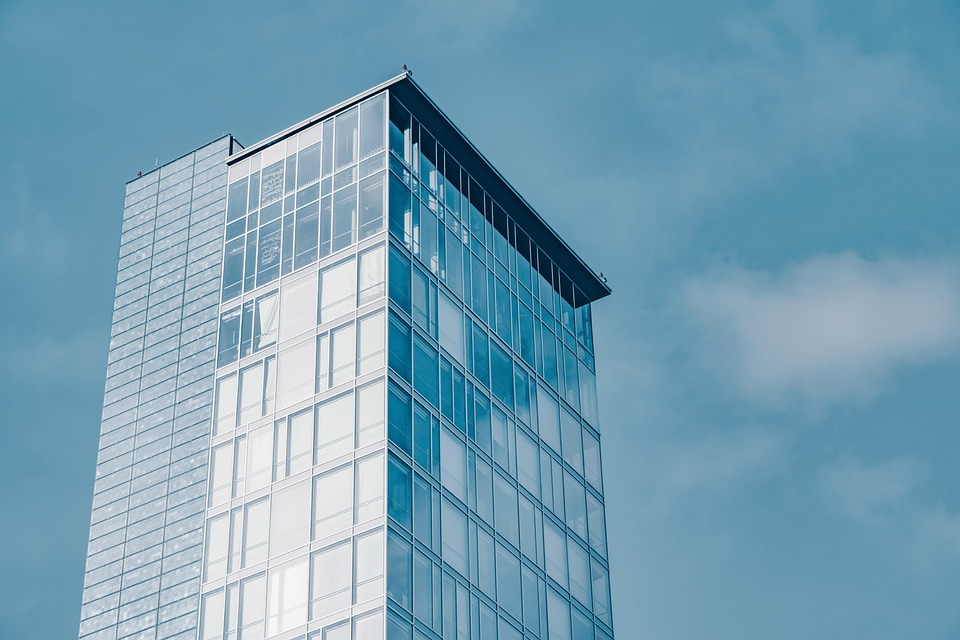
When you walk around Nairobi’s high-rise zones you’ll see towers where large elevations are almost all glass. Here are the drivers for that high percentage of glazing coverage:
- Vision & iconic status: Developers want a landmark aesthetic; full glass elevates the building profile.
- Floor-plate efficiency: Glass allows full facade glazing, slender columns and large open plans; hence more usable area and rent per floor.
- Tenant expectations: Modern firms expect floor-to-ceiling glass, view corridors and daylight — so façades respond.
- Global design templates: Many multinational architects bring glass façade typologies; Kenyan clients adopt them for global appeal.
- Performance based envelope: With sun-studies, shading devices, high-performance glazing, a high percentage of glass becomes viable from an energy point of view.
In essence: the high glazing coverage reflects confidence that the envelope can perform, while delivering the visual and market benefits.
How Your Company Should Approach Glass Façade Specification in Nairobi / Kenya
If you are a developer, architect or contractor in Kenya considering a glass façade, here’s a structured approach:
Step 1: Early stage façade strategy & orientation
- Conduct sun-path / shading studies for your site (consider Nairobi’s latitude ~ 1°17′ S)
- Choose orientation-sensitive glazing and shading; avoid “glass for its own sake”.
- Define your performance targets (e.g., U-value, SHGC, daylight factor, acoustic reduction).
Step 2: Select glazing system and frame
- Choose proven systems (double glazed, Low-E, argon fill)
- Frame systems with thermal breaks and adequate structural anchors
- Consider wind loads, seismic (in tall buildings) and safety codes in Kenya.
Step 3: Integrate with mechanical, lighting and envelope systems
- Daylighting strategy: use glazing to reduce artificial lighting load
- Solar control: external louvers, frits, shading devices
- Passive ventilation or hybrid ventilation if part of design (see Nairobi study on hybrid ventilation).
Step 4: Budget lifecycle cost, not just upfront cost
- Estimate energy savings from envelope improvement
- Estimate maintenance/cleaning costs for large glass façade
- Estimate premium rent potential for glazed building.
Step 5: Choose a qualified façade installer and maintenance plan
- Ensure the installer is experienced in curtain wall systems
- Specify maintenance access (window cleaning gantries, façade access)
- Offer service contracts for cleaning, sealant replacement, inspections.
Summary: Why Glass Over Ordinary Walling
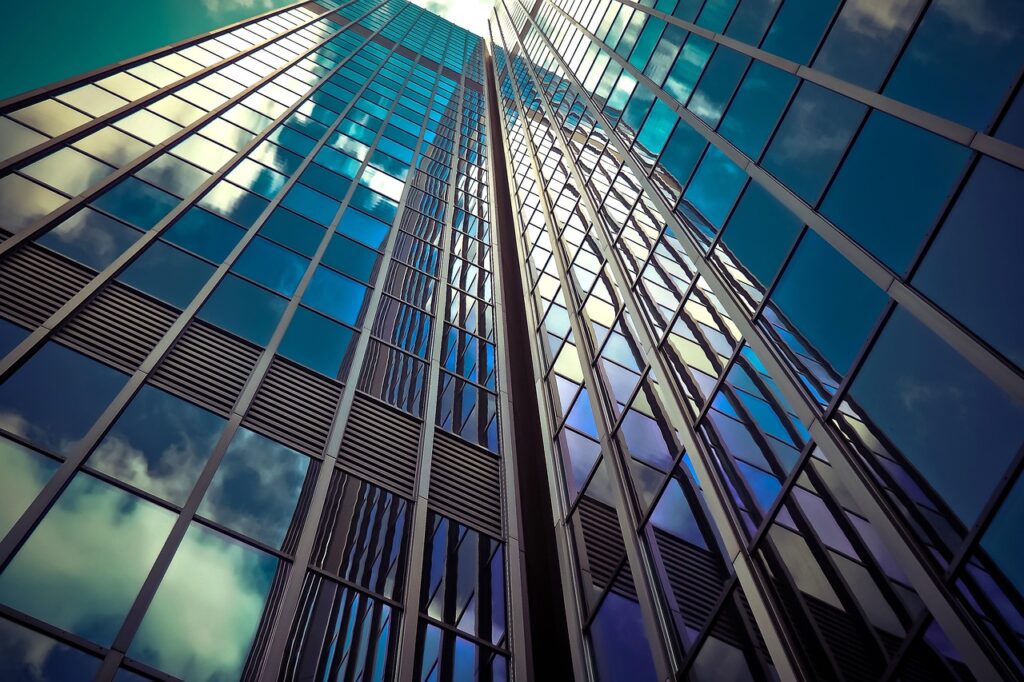
To summarise:
- Glass allows more daylight, enhancing occupant wellbeing and reducing lighting load.
- Modern glazing technologies ensure better thermal & acoustic performance, making glass viable in Kenya’s climate.
- Glass façades support branding, premium value, open-plan flexibility and speed of construction.
- For Kenyan high-rise and corporate office markets, glass façades meet market expectations for prestige and performance.
- When engineered and maintained properly, the lifecycle benefits (energy savings, tenant attraction, asset value) justify the initial premium.
In effect, glass is replacing ordinary walling because it delivers on both performance and appearance — not just one or the other.
Final Call — ToughGlass Kenya Has You Covered

At ToughGlass Kenya, we understand that in Kenya’s dynamic commercial real estate market, your building façade is not just a shell — it’s a strategic asset. We offer a full range of glassworks in Nairobi and across Kenya: from high-performance curtain wall systems and energy-efficient façades to internal glass partitions, boardrooms, balustrades and smart glass installations.
Whether you’re planning a landmark high-rise in Westlands, a modern corporate tower in Upper Hill, or refurbishing an office block in Kilimani, ToughGlass Kenya is ready to partner with you. Contact us to place your order, specify your glazing system or schedule a façade consultation.
Invest in the future of your building — frame it in glass, not just concrete. Place your order with ToughGlass Kenya today.
